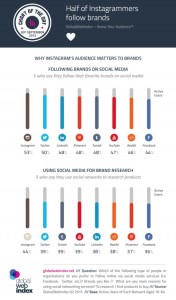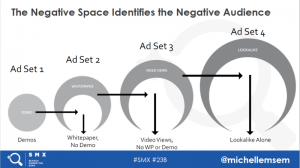
katielwhite91 / Pixabay
The light at the end of this long pandemic tunnel is growing brighter in the United States. As more and more people are vaccinated and companies adjust their workplaces, we can feel a sense of some normalcy returning (or at least an exit from the pandemic-dominated lives we’ve all led over the past 13 months).
Signs of economic growth and confidence have emerged as well. These signals are particularly prevalent in the job market. After millions of Americans became unemployed as a result of the pandemic, companies are once again ready to hire. Recent data indicates that the labor market is tightening and we’ve all seen or heard anecdotal stories of businesses having trouble finding workers. Additionally, job openings reached their highest level in March with over 8 million postings. Despite this large jump in job postings, hiring was lower than expected, which points to many companies struggling to match workers with open positions.
Even for those companies lucky enough to withstand the challenges of the pandemic and survive, many businesses now face new challenges related to employee recruitment and retention. How do you build a team post-pandemic and motivate them to excel? This article is the first in a four-part series that will examine the evolution of building a team to thrive in today’s marketplace, including hiring, onboarding, maintaining the team, and continued team building.
A great deal of uncertainty exists and business leaders must adjust to meet the moment. Despite these challenges, businesses have new opportunities to identify and build exceptional teams that will power a company’s growth. It all starts with hiring.
Finding the Right Candidate
Identifying prospective employees is as much an art as it is a science. Business leaders shouldn’t recruit just anyone. The key is finding potential team members that fit your organization’s culture. Those employees are much more likely to thrive and add value. Here are five recruitment pipelines that can help you identify future stars:
- Word of Mouth: Use your existing network to promote open positions, including friends, colleagues, and even clients or customers. They know you and your business, which means they’ll have a strong sense of candidates who will be a good fit. Revisit previous sources for employees, such as college professors. If a person or source has been helpful in the past, tap them again.
- Current Employees: Offer your current team members incentives to bring in qualified job candidates. Incentives are an effective tool to encourage employees to recommend the best and brightest.
- Trade Association: No matter what industry you’re in, there is a trade association or industry group representing that market. These groups typically offer job boards and posting. It’s worth the investment to get in front of candidates who are already active in your space.
- LinkedIn: The social media platform for professional networking offers many tools to recruit for open positions. Ensure that any job posts include detailed descriptions of the position and your company. You want prospective candidates to have a good sense of the team and your values.
- Professional Recruiters: Depending on the type of hire for which you’re searching, professional recruiters can be effective in managing the process and finding that perfect fit. It’s important to note, though, that recruiters can be expensive and cost prohibitive for some companies.
Of course, a major part of finding the right fit is being honest about the position. Ensure the job description is clear and descriptive about the responsibilities, expectations, hours, pay, and more. The more direct you are upfront, the fewer headaches and hassles you’ll have later in the process.
Due Diligence Matters
Once you’ve identified a list of strong candidates, it’s time to conduct additional due diligence. This stage is really the point at which you and/or others in the business have narrowed down the list to the top few applicants you want to consider seriously.
Candidate due diligence should include background checks, credit checks, and multiple rounds of interviews. Background and credit checks might seem excessive, but if your business works with sensitive or personal information about other employees, customers, or others, this is a necessary step. Be clear upfront with the candidate that you will be performing these checks.
The interview process should include HR representatives, potential peers, supervisors, and company executives. Getting perspectives from various stakeholders will be important in making a final decision.
Consider having candidates participate in psychological testing. This process isn’t nearly as invasive or scary as it sounds. Licensed corporate psychologists administer tests that gauge how candidates react, process information, and what character traits are dominant. All of this is helpful information and a worthwhile investment. If you have consistent use of a corporate psychologist, they are also familiar with your existing team and will know if the candidate will make a good team member.
Finally, as a candidate progresses through the due diligence process, don’t forget that they’re also evaluating your business. If you think a candidate is a good fit, you should be “selling” your company to them as well.
Make the Offer
Ater the due diligence process is complete and your team has decided on a new hire, it’s time to make the offer. Given the tight labor market, businesses need to be aggressive to seal the deal. Of course, salary is crucial to any offer and often the top consideration of candidates. But don’t forget about other benefits, which can be dealbreakers. Offers should include a generous benefits package. Medical, dental, and vision coverage are standard as is some level of retirement saving, such as company matches to a 401(k), SIMPLE IRA, or other retirement account. Company contributions to a Health Savings Account and/or 401(k) profit sharing can be nice to offer and will differentiate your business.
Work life balance is important for everyone, so consider how your holiday and paid time off allowances stack up to others. Likewise, more businesses now offer flexible work arrangements. This flexibility is a benefit many employees now expect as a result of the pandemic.
Another set of benefits that have become standard with the pandemic are mental health support and employee assistance plans.
Make the offer as attractive as possible with these benefits and your company will be in a much stronger position to secure the new hire you want.
Take a Long-Term Approach
The process to recruit and hire new team members is not fast or easy, and nor should it be. Employees are vital to any business’ success. The tips above have a proven track record and additional hiring best practices might be helpful too.
When considering how to build your team, take a longer perspective. Hiring is a long-term investment for your company. Avoid making lots of concessions, or just putting someone in place to have a proverbial body in the chair. This advice is especially true for smaller firms. Hiring the right person is worth the wait, even if there is some short-term pain for a team that feels overstretched.
Trying to find a shortcut or trick to hire someone quickly will probably lead to future headaches. This approach is also costly given the expense of hiring, training, and then replacing an employee. Simply put, companies are more successful when they have dedicated, smart, and motivated team members. Invest the necessary time and resources into your hiring process to guarantee you find the right fit for your business.
Business & Finance Articles on Business 2 Community
(49)
Report Post







